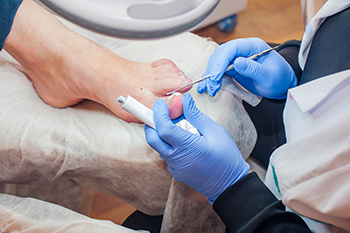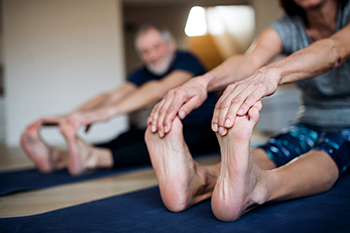 The most common reason corns on the feet develop is excess friction that is caused by the shoes that are worn. They are defined as small, hardened areas of skin that can form in different areas of the foot. A soft corn will develop between the toes, and can cause severe discomfort. Wearing shoes that are too tight may lead to having a soft corn. Hard corns can form on the outside of the pinky toe, and seed corns are often found on the bottom of the foot. Many corns will dissolve when the shoes that are worn fit properly, and it may help to wear thick socks which can absorb excess pressure. If you have corns on your feet, please speak with a podiatrist who can identify and treat this painful foot condition.
The most common reason corns on the feet develop is excess friction that is caused by the shoes that are worn. They are defined as small, hardened areas of skin that can form in different areas of the foot. A soft corn will develop between the toes, and can cause severe discomfort. Wearing shoes that are too tight may lead to having a soft corn. Hard corns can form on the outside of the pinky toe, and seed corns are often found on the bottom of the foot. Many corns will dissolve when the shoes that are worn fit properly, and it may help to wear thick socks which can absorb excess pressure. If you have corns on your feet, please speak with a podiatrist who can identify and treat this painful foot condition.
Corns can make walking very painful and should be treated immediately. If you have questions regarding your feet and ankles, contact one of our podiatrists of Biebel & DeCotiis Podiatry Associates. Our doctors will treat your foot and ankle needs.
Corns: What Are They? And How Do You Get Rid of Them?
Corns are thickened areas on the skin that can become painful. They are caused by excessive pressure and friction on the skin. Corns press into the deeper layers of the skin and are usually round in shape.
Ways to Prevent Corns
There are many ways to get rid of painful corns such as:
- Wearing properly fitting shoes that have been measured by a professional
- Wearing shoes that are not sharply pointed or have high heels
- Wearing only shoes that offer support
Treating Corns
Although most corns slowly disappear when the friction or pressure stops, this isn’t always the case. Consult with your podiatrist to determine the best treatment option for your case of corns.
If you have any questions please feel free to contact one of our offices located in Holmdel and Middletown, NJ . We offer the newest diagnostic and treatment technologies for all your foot and ankle needs.




